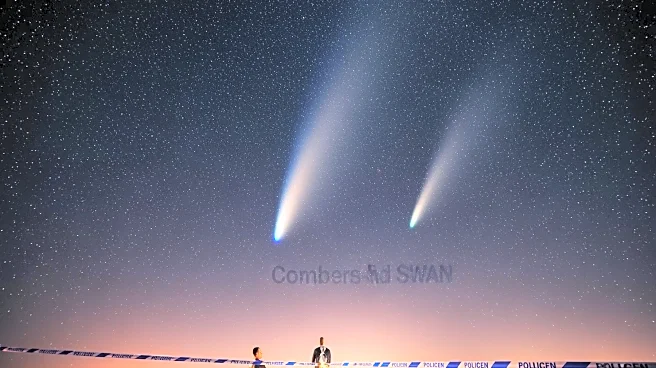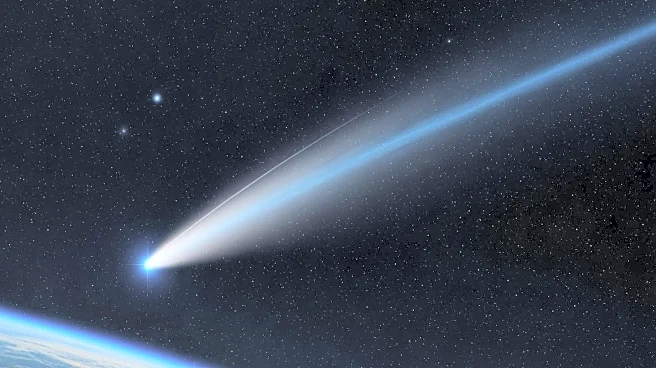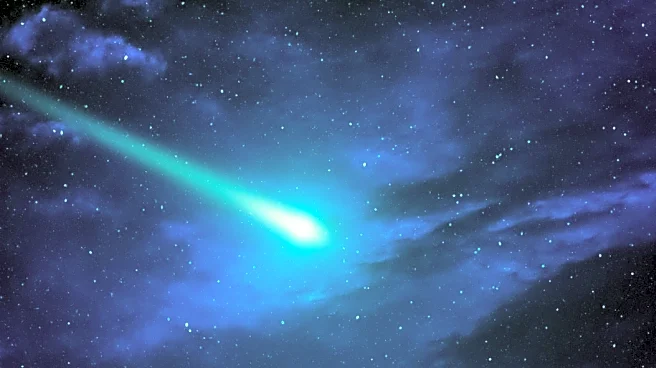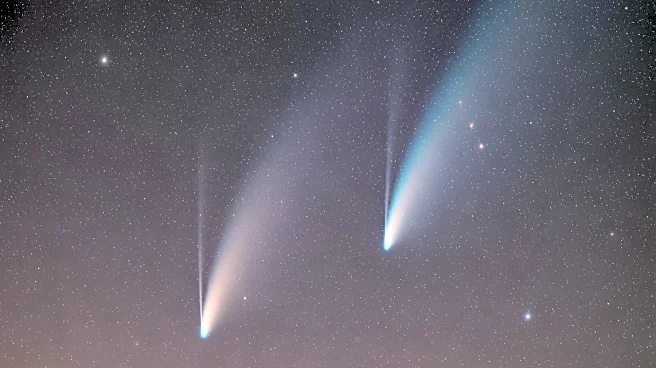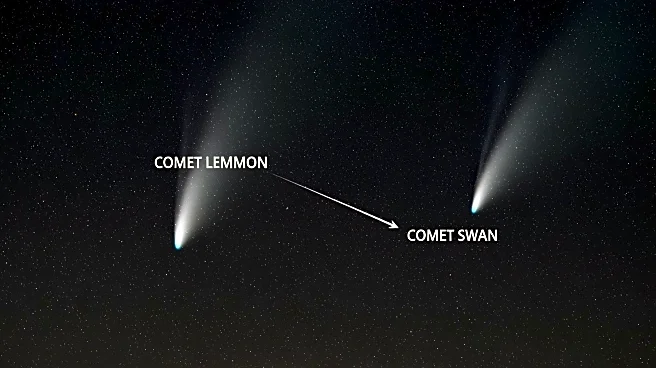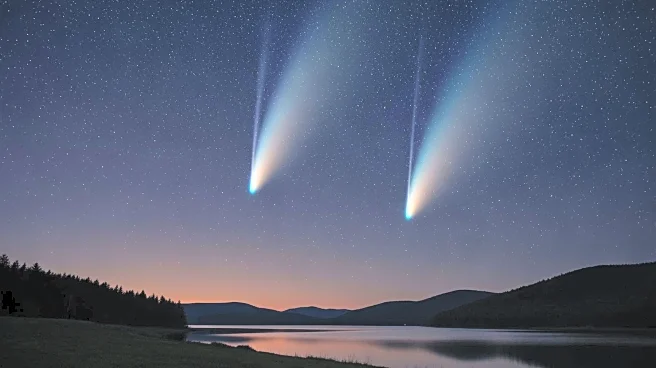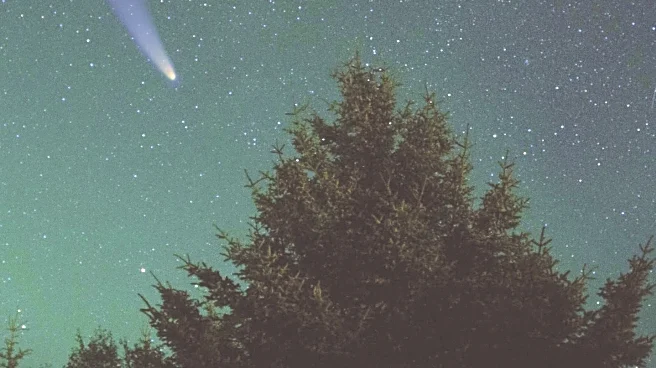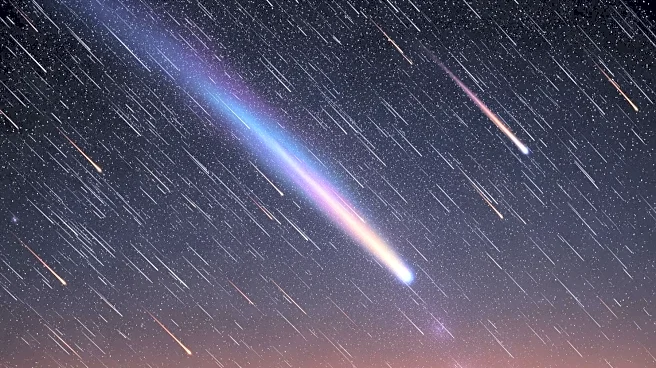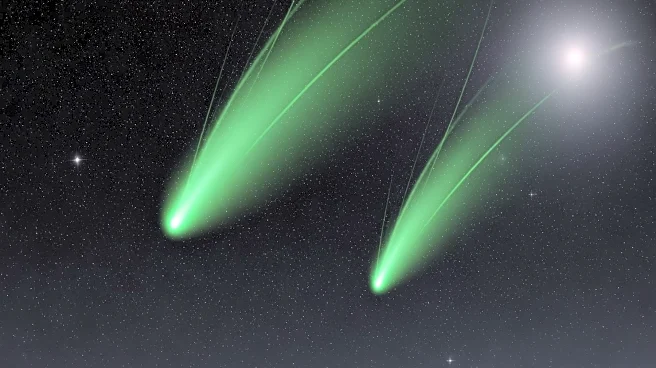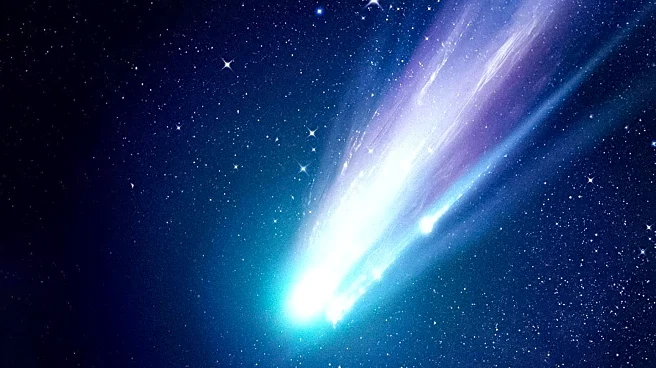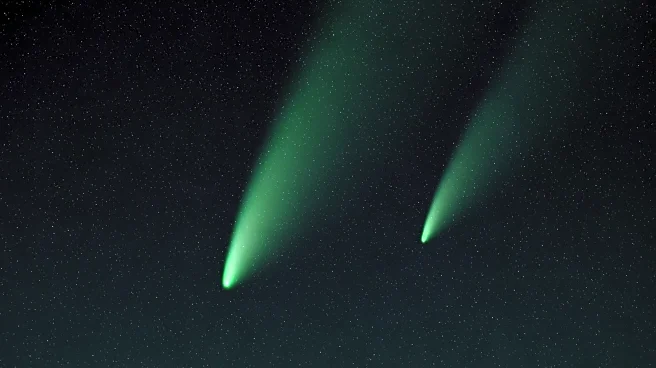What's Happening?
Two rare comets, C/2025 A6 (Lemmon) and C/2025 R2 (SWAN), are set to appear in the night sky this October, providing a unique opportunity for skywatchers. Discovered in 2025, these comets will not return
for hundreds of years, making their appearance a once-in-a-lifetime event. Lemmon was discovered by the Mount Lemmon Survey in Arizona, while SWAN was identified by Ukrainian amateur astronomer Vladimir Bezugly using the Solar Wind ANisotropies instrument. Lemmon will be visible without equipment on October 21, while SWAN will be fainter but visible around October 20. Observers are encouraged to find dark locations away from city lights to best view these celestial phenomena.
Why It's Important?
The appearance of comets Lemmon and SWAN is significant for both amateur and professional astronomers, as such events are rare and provide valuable opportunities for observation and study. These comets, with their long orbital periods, offer insights into the composition and behavior of celestial bodies that are not frequently observed. For the general public, this event encourages interest in astronomy and science, potentially inspiring future generations of scientists. The visibility of these comets also highlights the importance of reducing light pollution to enhance the visibility of celestial events.
What's Next?
As the comets approach their peak visibility, astronomers and enthusiasts will likely organize viewing events and educational sessions to maximize public engagement. The scientific community may also conduct studies to gather data on the comets' composition and trajectory. Additionally, the event may prompt discussions on the preservation of dark skies and the impact of light pollution on astronomical observations.
Beyond the Headlines
The appearance of these comets underscores the importance of international collaboration in astronomy, as discoveries often involve contributions from scientists and enthusiasts worldwide. The event also highlights the role of technology, such as telescopes and imaging instruments, in advancing our understanding of the universe. Furthermore, it raises awareness about the need for accessible public education in science to foster a deeper appreciation for natural phenomena.
